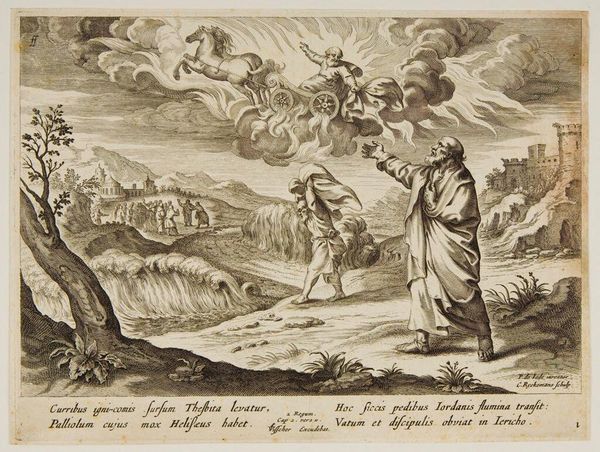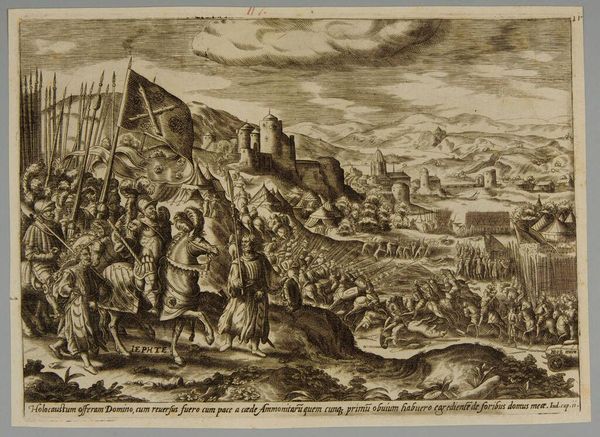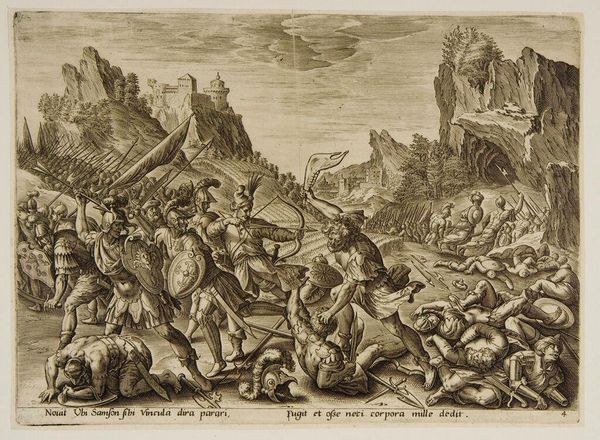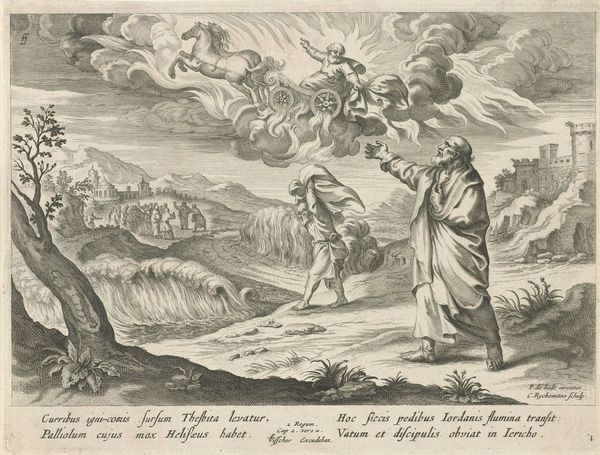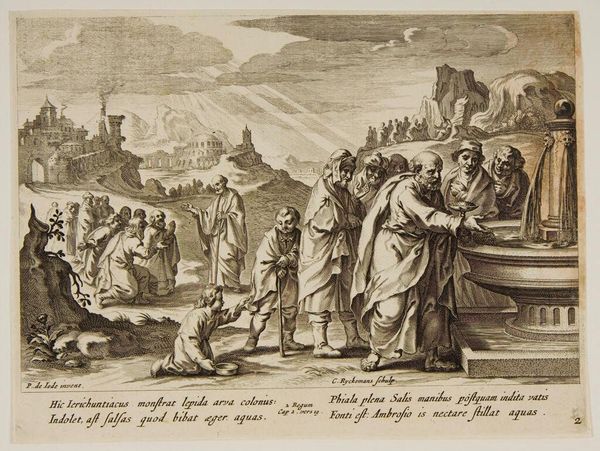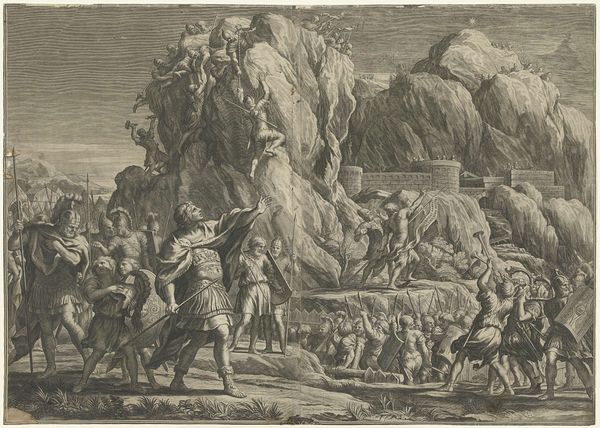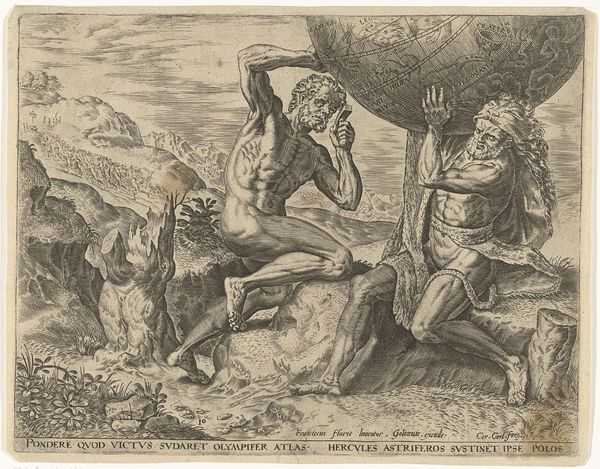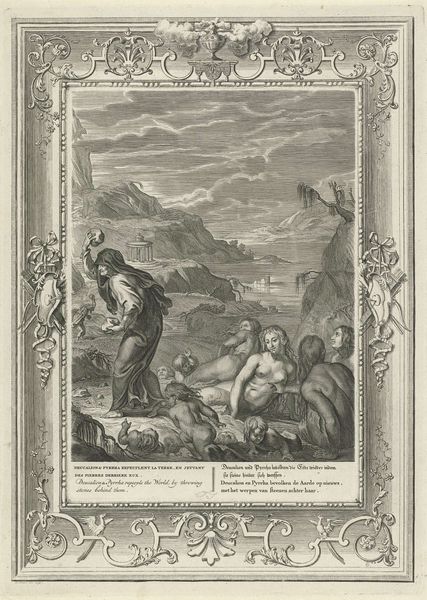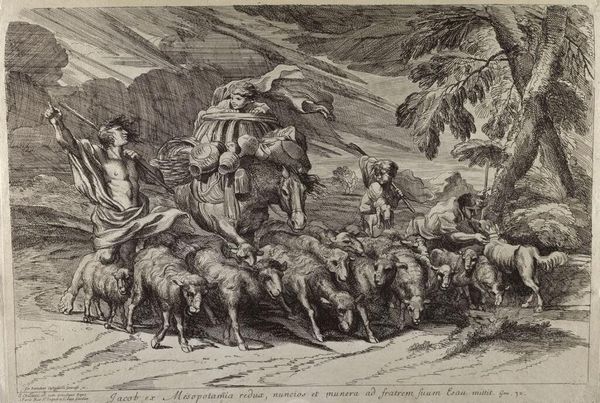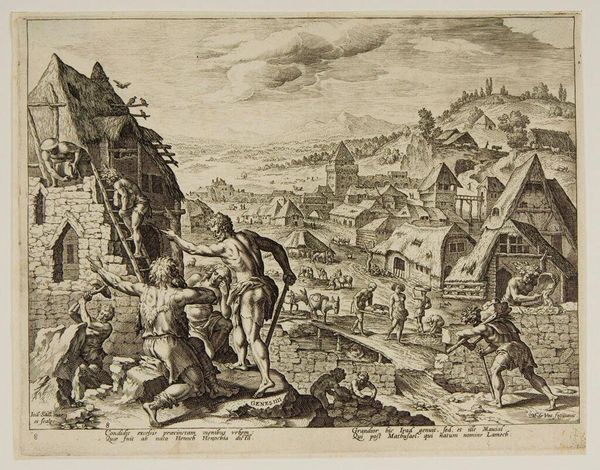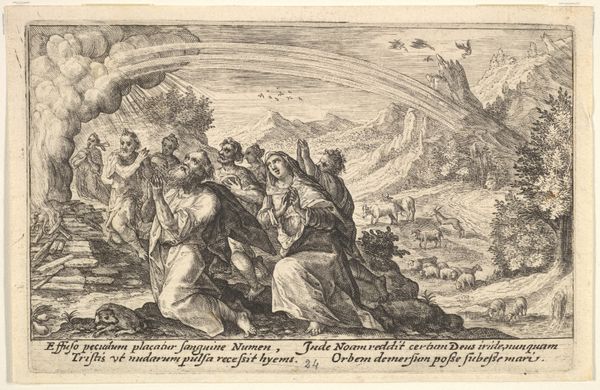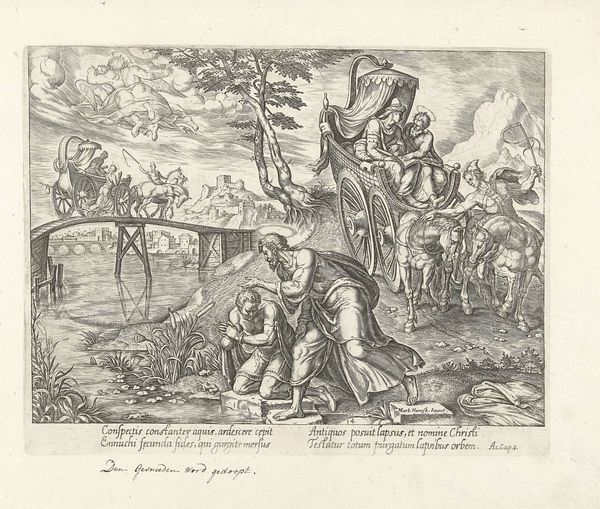
Copyright: CC0 1.0
Curator: Let's examine Anton Wierix II's "Manoah's Sacrifice," a work currently held at the Harvard Art Museums. Editor: The first thing that strikes me is the medium itself, that intricate engraving. You can almost feel the labor involved, the dedication to precise lines and the dense detail. Curator: Indeed. The work references the biblical narrative where Manoah and his wife, previously barren, offer a sacrifice and receive the divine prophecy that they will bear a son, Samson. It speaks to themes of divine intervention and belated motherhood. Editor: Right, and looking at the offering itself, the animals aflame atop the altar, I wonder about the cultural significance of the materials used in sacrifice. What did it mean to give up such resources? Curator: We can see the angel ascending from the flames, a patriarchal symbol of divine reassurance while also marking the woman only as a vessel for a man's future. Editor: So, from a materialist perspective, we’re considering labor, resource management, and, as you point out, the social hierarchies present. Curator: It's a testament to how deeply entwined these narratives are, isn't it? Editor: Precisely. There’s so much to unpack here.
Comments
No comments
Be the first to comment and join the conversation on the ultimate creative platform.
